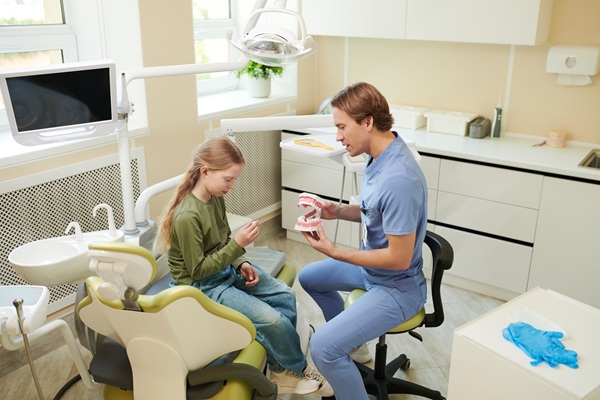5 Signs and Symptoms of Occlusal Disease

Occlusal disease is a topic that is just starting to gain some traction in the dental and medical community. This is a disease that can be hard to understand.
In order to understand it more clearly, we will first take the definition of occlusion from the American Dental Association: "Any contact between biting or chewing surfaces of maxillary (upper) and mandibular (lower) teeth." This means that occlusal disease is a set of symptoms or problems that happen during or because of biting, chewing or contact between the upper and lower teeth.
Symptoms of occlusal disease
1. Facial pain
When affected by occlusal disease, your teeth are a different shape than what they should be for good chewing technique. So without thinking, you might be chewing in an unnatural or irregular way. This would cause the muscles of your face to strain and cause general muscle pain in your face. You might also experience joint pain in your jaw.
2. Headaches
This is a symptom that many people do not mention to their dentist. However, it is involved in almost every kind of dental disease and you should mention headaches at every visit. Headaches are often caused by tired muscles or grinding that can be associated with occlusal diseases.
3. Tired facial muscles
Occlusal disease causes a restructuring of the teeth and it can become more difficult to chew your food effectively. This means that you might be chewing for longer and longer, which will make your jaw muscles tired.
4. Tooth sensitivity
Constant wear-and-tear can shave off the enamel of your teeth and expose the inner pulp to the elements. This will make your teeth much more sensitive to temperature and the elements.
5. Vibrations (Fremitus)
A fremitus is usually caused by occlusal trauma, or when two occlusive teeth are smashing together harder than they should be. Your dentist can touch the side of your mouth and feel these vibrations.
Causes of occlusal disease
To further help understand how occlusal disease can occur, the following are some of the causes of this condition:
Dental attrition
Attrition is wear resulting from tooth-on-tooth contact. You chew a lot in your lifetime, and eventually, the enamel starts to wear down. This is a normal part of the aging process and is also a common issue for people with bruxism (teeth grinding).
Abrasion
This is the loss of enamel from using your teeth for things other than eating. For example, using your teeth to remove bottle tops, hold pins or to bite your nails.
Toothpaste abrasion
This is a version of abrasion that involves brushing too hard. Try to use a gentle brushing motion on your teeth to avoid damaging them.
Erosion
Erosion is when your teeth wear away from acidic substances that are not caused by bacteria. This usually includes carbonated drinks and acidic fruit juices.
Are you experiencing some of these symptoms?
Talk to your dentist as soon as possible. You may need some cosmetic dental or orthodontic work to fix the damage and return your bite to normal. If you have any questions, our professional office staff is happy to speak with you.
Request an appointment here: https://whiteflintfamilydental.com or call White Flint Family Dental at (301) 273-1085 for an appointment in our Rockville office.
Check out what others are saying about our services on Yelp: Read our Yelp reviews.
Recent Posts
A leading reason people turn to a cosmetic dentist is to get a whiter smile. Teeth whitening happens to be one of the most popular cosmetic dental procedures. However, it is not the only way a cosmetic dentist can help you get a whiter smile. Here is a closer look at your smile-brightening options.Cosmetic dentists…
A kid-friendly dentist helps children feel calm, safe, and understood from the very first hello, setting the stage for easier appointments and healthier habits. This approach blends gentle communication, comfortable spaces, and age-appropriate education to turn uncertainty or even fear into confidence. The result is smoother visits, fewer behavioral hurdles, and a brighter outlook on…
Wondering how a cosmetic dentist can help your smile? Read on to learn more about some common cosmetic dentistry treatments. An individual’s smile affects their self-esteem, so dental problems cause people to hide their smiles. The issue can be a result of genetics, accidents, or poor oral health habits. Regardless of the cause, a cosmetic…
A gummy smile shows more gum tissue than expected. If you consider your smile a bit too gummy, a cosmetic dentist can provide various treatments to help achieve the look you want. A cosmetic dentist can help patients safely alter the appearance of a gummy smile and other issues with various cosmetic treatments.Dentists refer to…


